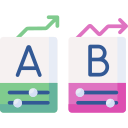Why This Analysis Matters Now
Rising customer expectations and shorter release cycles increase the opportunity cost of delays. Every sprint spent duplicating features natively is budget you cannot invest elsewhere. How do you quantify that tradeoff in your roadmap discussions?
Why This Analysis Matters Now
When finance, product, and engineering share a transparent cost-benefit view, compromises become intentional. A shared model reduces friction, exposes assumptions, and anchors decisions in measurable outcomes rather than slogans or tool hype.





